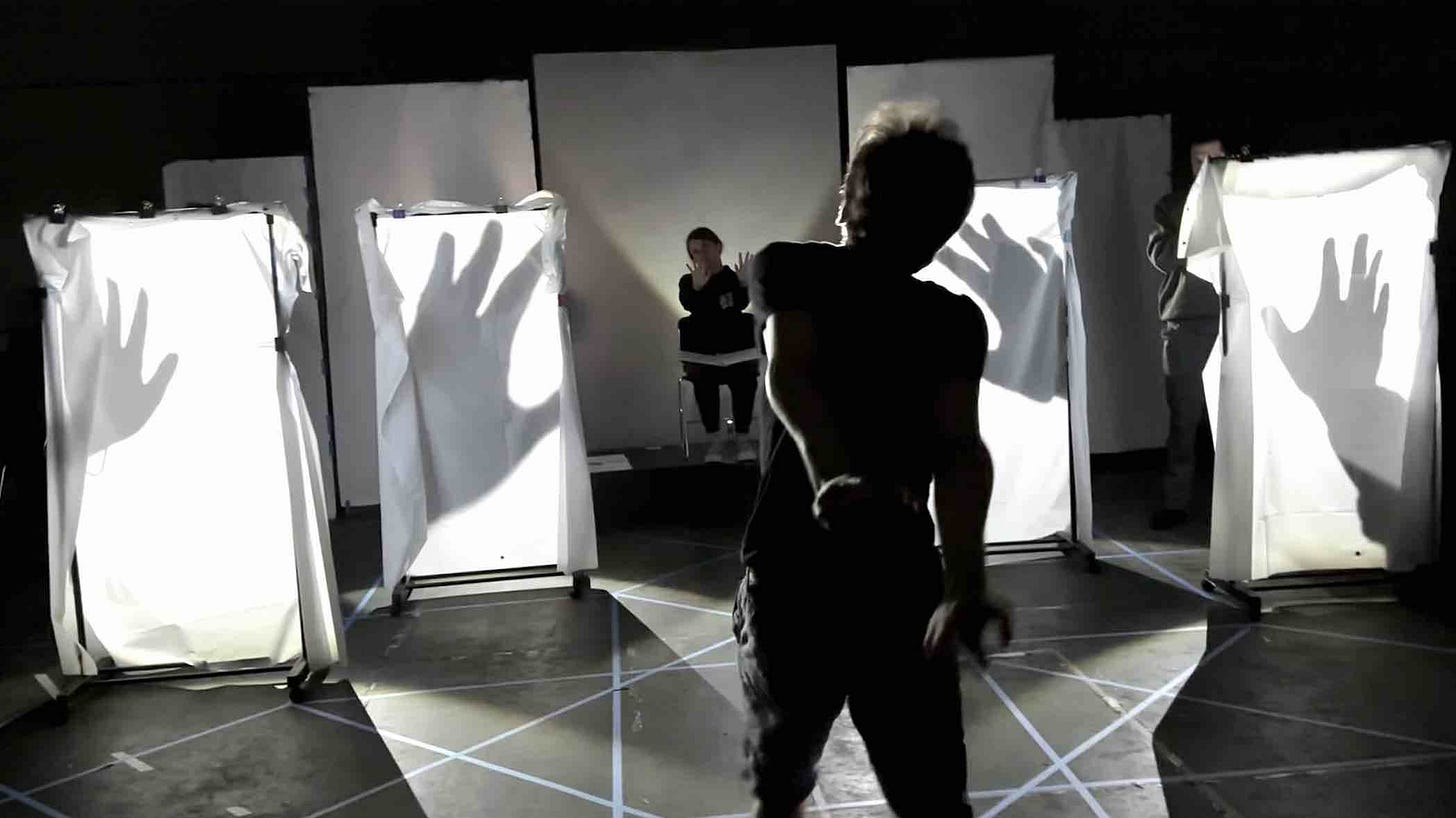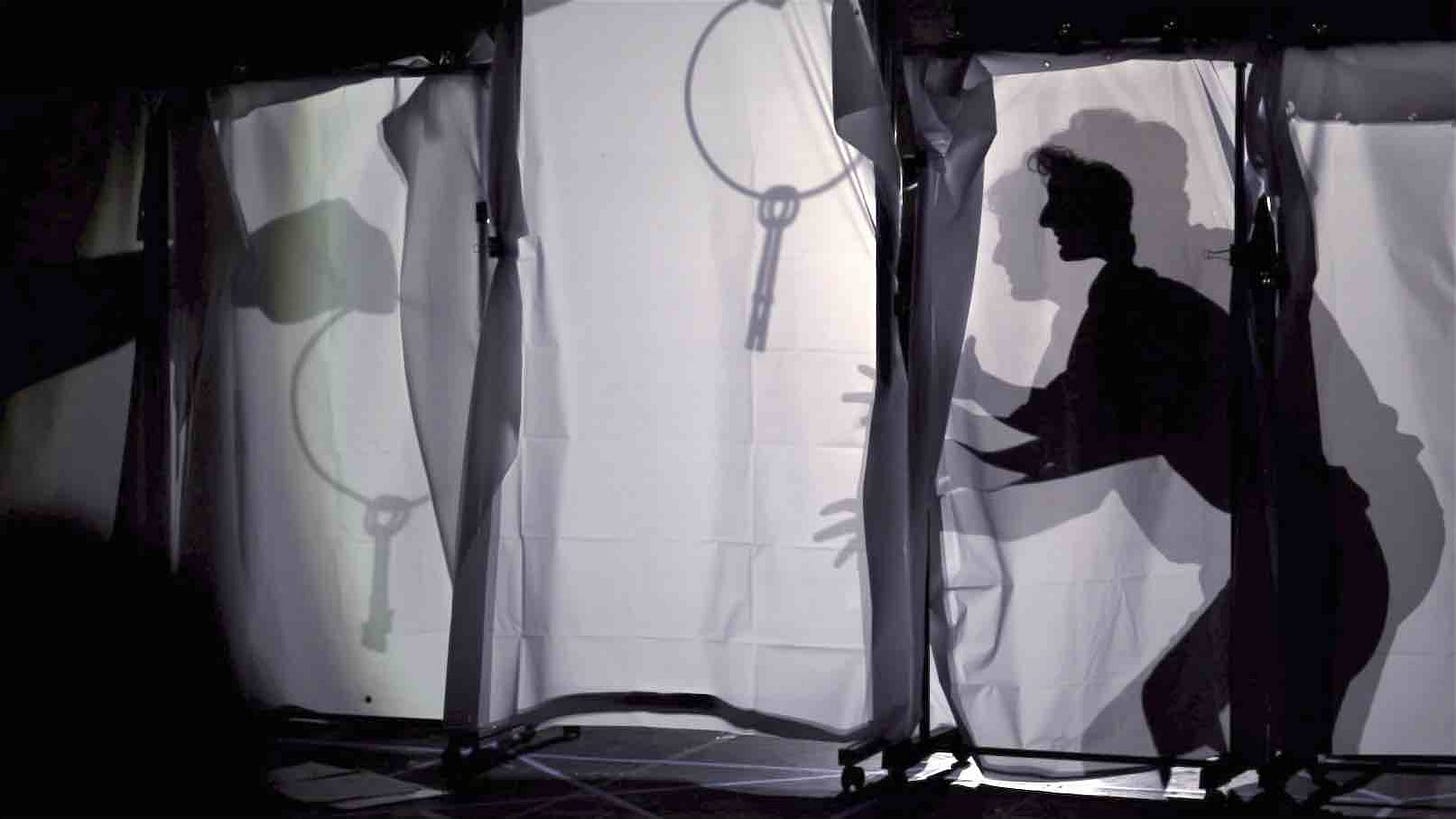Independent theater provides opportunities for artists like myself to bring unique and groundbreaking work to life, offering a stage for voices that might otherwise remain unheard. By championing independent theater, you can nurture a vibrant ecosystem where creativity thrives and varied perspectives enrich the performing arts.
Infinity is a recurring motif in Yevgeny Zamyatin’s dystopian novel WE. Surely he was laughing from beyond the grave when I presented a work-in-progress stage adaptation of his story that dragged on longer than infinity. Farceur that he was, I should have anticipated Zamyatin might throw some jokes my way, especially since he described his novel as “my most jesting and most serious work.”
After the presentation, it was time to put Yevgeny’s jests aside and get down to some serious work during the last four days of summer rehearsals. I spent my time off between rehearsal days cutting a significant amount of material from the script to get the length of Act I down from two hours to something closer to one hour and fifteen minutes. The cuts I made removed entire scenes, monologues, dialogue, a character, a dance and even a costume moment many of us were excited about.
When I returned to rehearsal, my collaborators and I sat down in a circle and shared responses we received from people who came to the presentation. I shared the responses I wrote about in my essay last week, and congratulated everyone on their hard work and fantastic performances. I also re-asserted putting all the work in front of an audience leads to discoveries about what works, what needs revision and what can be cut. I said we would have to say “goodbye and thank you” to some material that we all love for the benefit of the show. Using the metaphor of a buffet, I explained, “Keeping all the Act I material would be like putting the entire buffet on the audience’s plate. If we do that, the audience will be stuffed by the end of Act I; they won’t have a reason to come back for Act II. Delicious as every individual moment may be, we have to be selective about how much we serve up in Act I, so we can entice the audience to come back from intermission to devour Act II.”
Knowing the revised script had numerous cuts, the actors sat down and read just the text so they could see how we would get from point A to point Z without the deleted material. That reading was only forty-six minutes long–a very good sign. However, as you can see from the images above and below, the play also has movement and shadow sequences which add time.
While sitting down and reading the text was a useful intellectual exercise that helped us all accept and understand the new logic of the play, everyone also needed to experience how the edits would impact the physical life of the play–how they would move through the piece in time and space. That required significant re-staging, which was an “all hands on deck” effort involving the actors, the production stage manager and myself. Everyone met the moment, bravely rolling up their sleeves, leaping into the unknown. The movement of some chairs and projection screens was re-assigned, sound cues were rearranged, entrances and exits changed, and with the line cuts, actors needed to emotionally transition between moments faster than before. Everyone worked diligently to incorporate many changes, which demonstrated their expert skills and professionalism since none of the actors have their lines fully memorized and are carrying their scripts around the stage.
Re-staging took the better part of two rehearsal days. On the third day, we did a stop-start of the all material in Act II.
On the final day, we ran Act I before lunch. While the forty-six mintue length of the reading gave me some hope, my intuition was the act was still too long. Even so, if significant time was cut in this radically edited version of the script, I was sure I’d be well positioned to continue boiling it down further through shortening or cutting selected lines instead of more major surgery on the script.
The Act I run-through before lunch was one hour and twenty-eight minutes, thirteen minutes longer than I had hoped. When we came back from lunch, we ran Act I again, and the length came down to one hour, twenty-four minutes. Losing four minutes without more cuts was good news. It told me each time the actors perform the piece, it’s going to get shorter because they are learning how to swiftly get from one moment to the next. When they get their lines memorized, the time will come down a minute or two more. If I continue trimming lines here and there, we are going to get very close to the ideal one hour and fifteen minute Act I. The goal is now in sight, and I am feeling much better about the piece as a whole.
After a break, we followed Act I with a run of Act II. This was the first time we staggered through the entire show as one piece. I’ve never created a two act play before, so experiencing it all in one sitting felt like I touched a new creative milestone.
At the end of rehearsal, my collaborators and I stood together in a circle knowing we would be away from each other for the next two weeks. I congratulated them all again on their hard work. I also said, “In the last four weeks, we created something new that did not exist before we came into this room together. That is an incredible achievement we can all be proud of. The work is only going to get better, stronger, deeper as we begin to fold in the lights, costumes, and projection designs coming our way.” I asked everyone to memorize their lines during our time off, which they agreed to do, and everyone seemed to leave in good spirits. I’ll deeply miss the actors over the next two weeks but I know I’ll see them again for one last round of rehearsals starting in September.
And I’m not without plenty of work to do in the interim: there will be production meetings with the designers and the staff of the theater, a press release has to be written, I have to put the tickets in sale, invite critics to review the play, order props and costume pieces, and begin designing and writing the program. All that on top of coming up with an idea for a new post next week. I’ll also post photos from last week’s presentation on Instagram and Facebook, follow us there to see some incredible pictures!
Thank you for reading. I’ll keep you posted on how things progress and I look forward to seeing you at the theater October 11 - 20, 2024.
You can support live theater by sharing this essay with anyone you think might be interested!
WE is made possible by grant funding from the Foundation Against Intolerance & Racism (FAIR) in the Arts, the Puffin Foundation Ltd., and NYSCA-A.R.T./New York Creative Opportunity Fund (A Statewide Theatre Regrant Program). Production design support provided by the Edith Lutyens and Norman Bel Geddes Design Enhancement Fund, a program of the Alliance of Resident Theatres/New York (A.R.T./New York).





